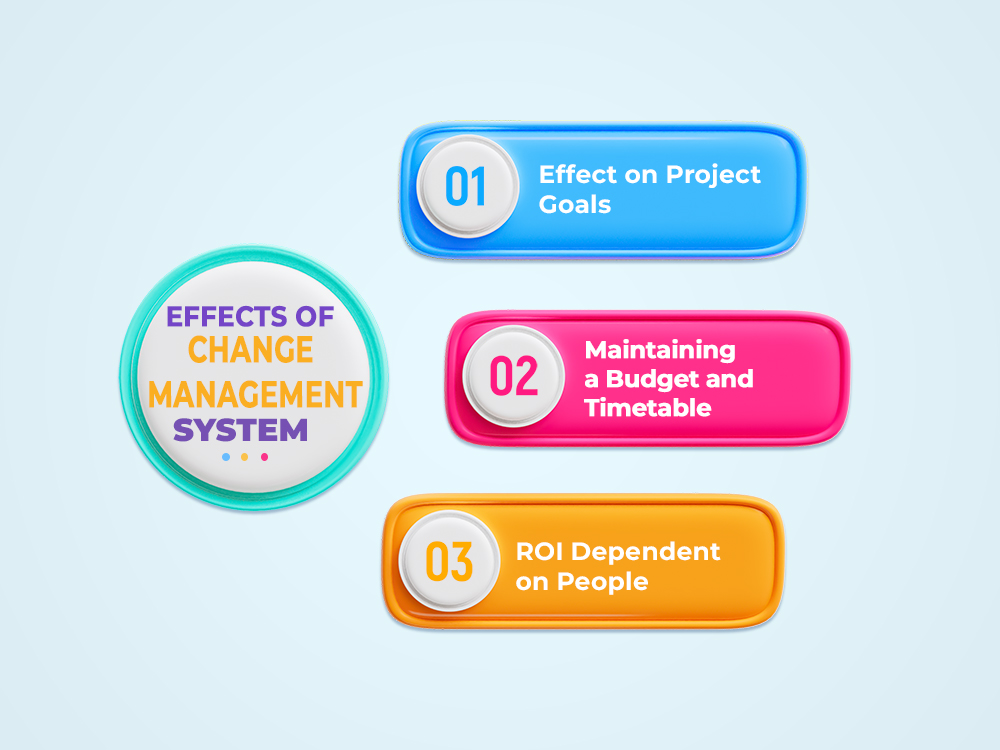The Role of Product Design Change Management System in Agile Development
A Product Design Change Management System helps teams track, approve, and document design updates. It keeps everyone on the same page and ensures compliance with standards and regulations. As customer needs grow more complex and technology advances, a good change management process becomes more critical than ever. This system is no longer optional — it’s essential for success.
What is a Change Management System?
By providing a framework for managing the human aspect of change, a change management system treats the transition or transformation of an organization’s objectives, procedures, or technology in a methodical manner. Planning, carrying out, and securing organizational changes is what it is.
A product design change management system is an organized method for managing design changes to a product. It makes sure that all changes are methodically assessed, accepted, and put into effect without interfering with the process of product development as a whole.
Every product designer knows that changes are part of creating something great. However, without a proper system to manage those changes, chaos can ensue. Did you know that companies with organized change control see up to 25% fewer product failures? Streamlining change processes accelerates innovation and enhances quality.
Why is a product change management system necessary for businesses?
- Businesses need change management systems for a number of reasons. They are:
- Recognize the needs of the client
- Prevent adverse effects
- Improving seamless operational transitions
- raises the success rate and lowers change-related expenses
- Establish a favorable impression
- Boosts worker engagement
- Reduce Interruptions
- Boost output and performance
- enhances the ability to make decisions
- Enhances project management
Components of a Product Change Management System
A complete change management software is made up of several parts:
Change request process: How changes are initiated and submitted.
Change Management Software: Best Practices & Tools for Success. Assessing how changes affect other parts of the product.
Approval workflows: Who approves each change, and in what order?
Documentation and audit trails: Keeping records for future reviews or audits.
Choosing the right system offers many advantages:
Better product quality due to controlled updates.
Fewer errors that cost time and money.
Easier compliance with industry standards like ISO or FDA regulations.
Key Features of an Effective Product Design Change Management System
Automated Workflow Management
Automation helps streamline change requests and approvals. Instead of manual emails and spreadsheets, workflows move smoothly from start to finish. This reduces delays and keeps everyone consistent. Imagine faster product updates without sacrificing accuracy.
Real-time Collaboration Tools
Teams in different locations need to work together. Cloud-based platforms enable instant communication. Everyone sees the latest designs, comments, and approvals. This cross-team collaboration speeds up decisions and minimizes misunderstandings.
Version Control and Traceability
Every change creates a new version of the design. Good systems record who made what and when. If needed, teams can revert to earlier versions. This feature safeguards against mistakes and helps reverse errors quickly.
Integration with Other Systems
Linking the change management system with CAD, ERP, or PLM platforms keeps data consistent. When one system updates, others follow suit automatically. This reduces manual input and minimizes errors.
Compliance and Audit Readiness
Regulatory bodies demand detailed records of product changes. A solid system provides comprehensive audit trails, making inspections easier. You can confidently show exactly how a design evolved.
How Does the Organization’s Operations Get Affected by the Change Management System?

A company’s ability to successfully navigate change is largely dependent on its change management system. It affects project outcomes, budgets, schedules, and the achievement of the intended return on investment, among other things. Here are the three main areas:
Effect on Project Goals
The possibility of achieving project goals is significantly increased by implementing systematic change management. Risks are reduced and a unified approach to achieving the intended results is promoted by coordinating strategies, resources, and stakeholder expectations.
Maintaining a Budget and Timetable
Realistic timetables, efficient resource allocation, and early detection of any financial ramifications are all made possible by the methodical approach of change management. As a result, it greatly increases the likelihood of adhering to the budget and timetable.
ROI Dependent on People
Its effect on attaining a people-dependent return on investment is arguably the most important factor. Effective Change Management engages stakeholders, addresses concerns, and provides the necessary assistance and training, ensuring a smoother transition and increasing the likelihood of achieving the anticipated returns on investment.
Best Practices for Implementing a PDCMS
Establish Clear Change Management Processes
Define who can initiate changes and who can approve them. Use standardized request forms. Clear rules prevent confusion and errors. These steps help everyone understand their roles.
Train Cross-Functional Teams
All stakeholders need to understand how the system works. Regular training ensures smooth workflows and reduces resistance. For example, a car manufacturer trained its team and cut change delays by 30%.
Leverage Technology for Automation
Choose user-friendly software that scales with your needs. Automation boosts efficiency and reduces human errors. Industry experts agree: “Automation enhances traceability and streamlines processes.”
Monitor and Continuously Improve
Regularly review change logs and system performance. Collect feedback from users to refine workflows. Small improvements over time lead to big gains in efficiency.
Foster a Culture of Change Control
Encourage everyone to follow the process. Emphasize the importance of documenting every update. When teams buy into change control, your system works better and faster.
Industry Examples and Case Studies
Automotive Sector
Ford Motor Company implemented a centralized change management system that cut recall rates significantly. Clear tracking helped catch issues early, saving millions in costs.
Medical Devices
Medtronic relies on strict change control to meet FDA rules. They use detailed documentation and impact analysis to keep patient safety top priority.
Electronics
Apple manages design upgrades without delaying the supply chain. Their system ensures new features are tested thoroughly before release.
What Makes Change Management So Important for Businesses?
Organizational adoption and transitions must be smooth for Business Intelligence (BI) integration to be effective. Under these circumstances, change management becomes essential:

Challenges and Solutions in PDCMS
Common Challenges
- Many companies face resistance from staff, complex approval steps, and data silos. These issues slow down product updates and create confusion.
- Practical Solutions
- Provide training programs to ease resistance.
- Simplify workflows where possible.
- Invest in integrated software platforms that connect all relevant tools for smoother data flow.
- Future Trends in Product Design Change Management
- AI and Machine Learning Integration
- Imagine systems that predict the impact of changes before they happen. AI can analyze past data for risks, helping teams avoid costly mistakes.
- Increased Focus on Digital Twins
- Digital twins give a virtual copy of your product. Changes can be tested virtually, saving time and resources before physical updates.
- Regulatory Technology (RegTech)
- Automated compliance checks can warn teams when a change might violate standards. This speeds up audits and keeps your product in check.
Conclusion
A strong product design change management system is the backbone of modern product development. It helps teams work faster, smarter, and more compliantly. Havteq provides you with faster change processes, meaning getting your products to market sooner, with better quality. Technology makes collaboration seamless and keeps everything documented. As markets grow more competitive, continuous improvement in change management can give you a real edge. Building or upgrading your system isn’t just good practice — it’s a smart move for future success.








